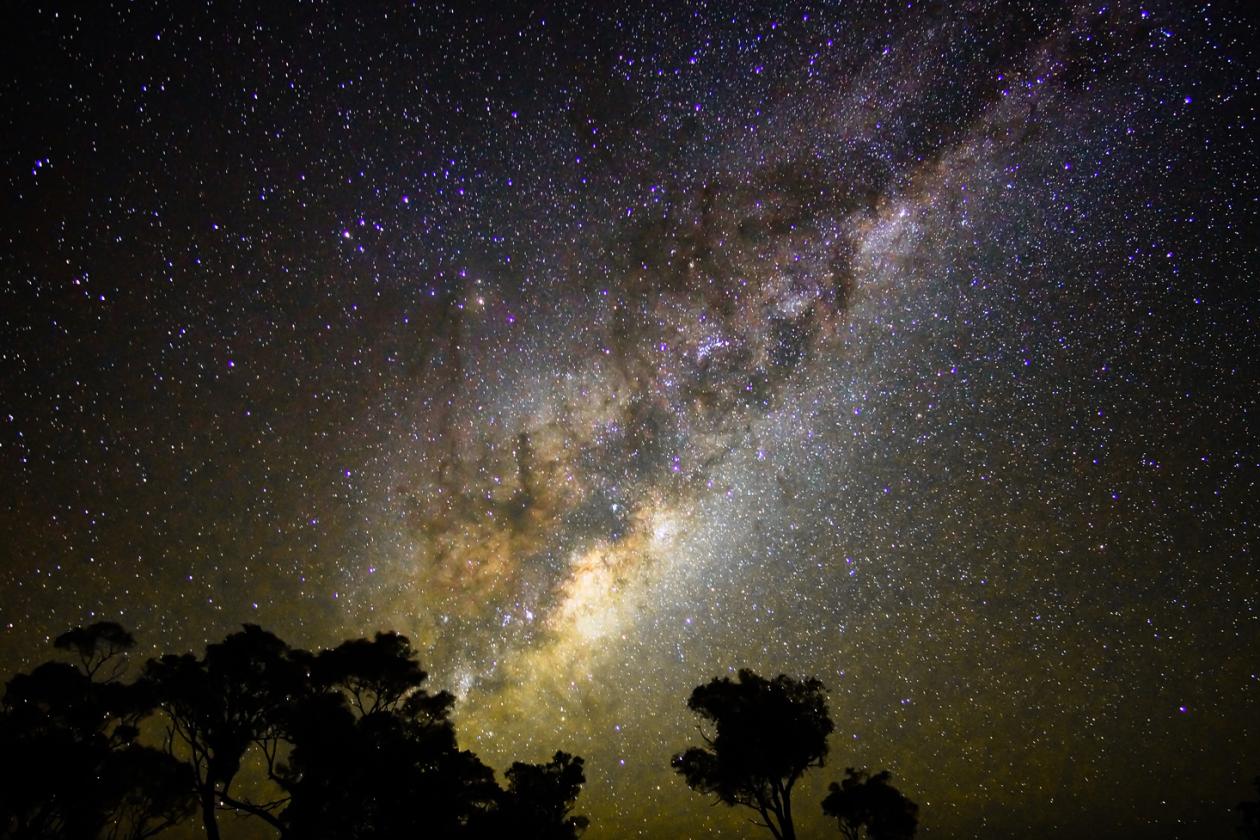Yarning Circle
Aboriginal Astronomy
Star Myths and Legends
This science lesson plan is centred on the exploration of Indigenous astronomy, an area rich in cultural and historical significance. The focus is for students to understand how star myths and legends, particularly those from various Indigenous cultures around the world, have shaped our understanding of the night sky. Students will learn about different star constellations and the deep connections these celestial patterns have with cultural narratives.
Throughout the lesson, students will examine star stories from diverse cultures, including those of First Nations communities in Australia, as well as ancient Greek and Roman star myths. This comparative approach will help students understand how societies across time and space have interpreted the stars in ways that reflect their unique traditions and life experiences.
Learning Objectives of Exploring Star Stories
Level 1
Identify some star myths and legends that explain constellations to specific cultures.
Level 2
Discuss how star myths and legends are culturally significant and develop a contemporary myth or legend about a chosen constellation.
Australian Curriculum Science Links
Science
Describe the movement of Earth and other planets relative to the sun and model how Earth’s tilt, rotation on its axis and revolution around the sun relate to cyclic observable phenomena, including variable day and night length (AC9S6U02)
History
The diversity of First Nations Australians, their social organisation and their continuous connection to Country/Place (AC9HS4K01)
Teacher Material Needed
- Access to online resources about First Nations astronomy and sky stories, and stories from other cultures across history. The following links might help you:
- Yolngu Dreamtime story - The Emu in the sky (ABC)
- Star stories from the Kamilaroi people (Aboriginalastronomy.com.au)
- First Nations sky stories from around Australia (SBS)
- Star myths from Ancient Greece Roman constellations and stories
- Drawing and painting materials for creating visual storytelling (paper, pencils, paints, etc.)
- Digital devices for creating multimedia presentations (computers, tablets, etc.)
Introducing the Concept of Indigenous Astronomy
- Introduce the concept of Indigenous astronomy to students, explaining its significance in cultural traditions and Indigenous storytelling.
- Share examples of First Nations star stories, highlighting the connection between celestial bodies and cultural narratives across the world. Reference star stories from Ancient Rome and Greece, as well as any students are familiar with to explain the shapes of star constellations.
- Discuss the meanings of star stories and legends and their significance to a community. Discuss any familiar or local star myths and legends and hypothesise where they might have come from.
Learning Activity 1: Observing the Night Sky
- Guide students in exploring First Nations star stories from different cultural groups across Australia, including the Dhui Dhui story of the Bandjin people (the story of the Emu in the Sky):
Two boys were out fishing in a canoe near Dunk Island (Coonangalbah) but had been told not to go near the sand spit as there was a fierce shovelnose ray that lived nearby. They ignored the warnings and began to fish there, but the ray bit through their line and towed them away. After dragging them round the ocean the Dhui Dhui towed the boys and their canoe into the Hinchinbrook channel, where they disappeared into the horizon. As the people looked towards the south where they had last seen the boys, the Southern Cross rose in the sky, making the shape of the Dhui Dhui, followed by two pointer stars.
- Instruct students to analyse the narrative elements and cultural significance of the star stories focusing on the relationship between celestial phenomena and human experiences.
- Compare these to star stories from around the world and across history. What can we tell about how these stories influenced civilisations and their cultural significance? If appropriate invite local Elders into your classroom to support student knowledge and understanding.
Learning Activity 2: Creating A Star Story
- Instruct students to choose a visible star constellation in their local area and research its cultural significance and traditional star stories by observing the sky on a clear night. If this is challenging, use the SkyViewer app to assist with seeing available constellations over your locality.
- Challenge students to create their own star myth or narrative explaining how the chosen star constellation came to be in the night sky.
- Provide opportunities for students to develop their star legends through brainstorming, drafting, and peer feedback, emphasising creativity and storytelling techniques.
Learning Activity 2: Star Storytelling
- Guide students in choosing a medium for presenting their star legends, ensuring that options such as written word, visual art, digital art, drama and music are available depending on student preference.
- Instruct students to use visual elements, symbolism in their art, and narrative techniques to effectively communicate their star legends to an audience, ensuring their legend has a take-away lesson or key concept.
- Provide time for students to create and refine their visual star storytelling projects, incorporating feedback and revising their work as needed.
- Provide opportunities for students to share and present their star story multimedia projects to the class, fostering communication and presentation skills.
Lesson Wrap-Up and Reflection on Aboriginal Astronomy
- Display students’ star legends by hanging them from the ceiling in a ‘starry sky’ display for others in your school community to enjoy and engage with.
- Support students to reflect on how the key messages of their star legends might impact the school community and ask them to consider what they would like people to learn from their stories.
- Reiterate learning about the cultural significance of legends within communities and encourage students to look out for other star myths and legends in future experiences.
Aboriginal Astronomy
Aboriginal Astronomy


